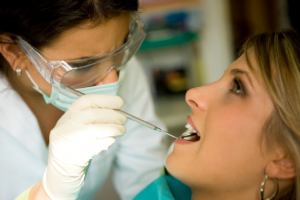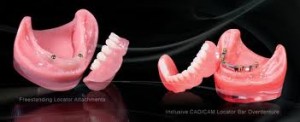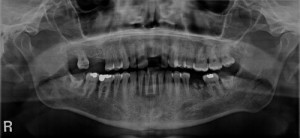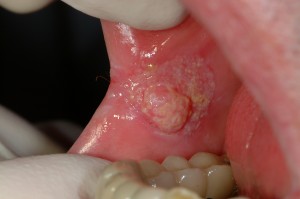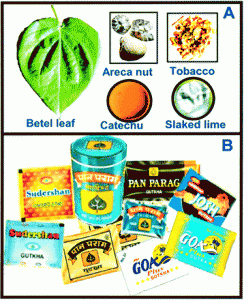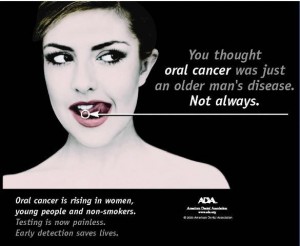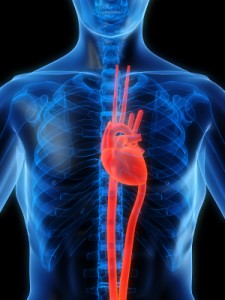Sometimes you may hear the term ‘biopsy’ when investigations are required for certain lesions in the mouth. Biopsy sounds like a scary procedure that brings the word ‘cancer’ to mind but in fact it is just an aid for diagnostic purposes. Continue reading
Author Archives: oileng
What is an Overdenture for Teeth?
Advanced periodontal or gum disease usually cause loose or painful teeth. If many of your teeth have become loose or painful, it may be too late for to save them. In such a situation, removing some of your teeth and replacing them with an overdenture may be the best way to avoid infection and restore function and health to your mouth. Continue reading
Oral Cancer: Treatment Options and Complications
Continued from Part 4
What are the principles of treatment for oral cancer?
Individuals with oral cancer often present too late for cure and some may not benefit from treatment. Three treatment options are possible:
- Attempted cure
- Active palliative care
- Supportive care only pending death
If cure is attempted, the highest chances of success are given by multimodality treatment – a combination of surgery, radiotherapy, and more rarely, chemotherapy. The most aggressive treatment that the individual is able to withstand will be recommended because if the first round of treatment fails, the chances of survival are much reduced. Continue reading
Oral Cancer: Investigations and Staging
Continued from Part 3
What are the investigations needed for oral cancer?
Investigations are done to see the extent of cancer and to confirm the diagnosis. The following investigations may be indicated:
- Jaw radiography or x-ray
- Chest x-ray or computed tomography (CT). This is important as a pre-anesthetic check especially in individuals with known airways disease, and to demonstrate second primary tumors or spread to lungs or lymph nodes, ribs or vertebrae.
- Magnetic resonance imaging (MRI) or CT of the primary site, of the head and neck, and suspected sites of distant spread. MRI is particularly useful to determine tumor spread, soft tissue involvement and lymph nodes involvement.
- Electrocardiography
- Blood test: full blood picture and hemoglobin, blood for grouping and cross-matching, urea and electrolytes, and liver function tests.
- Biopsy. Biopsy is a tissue sample taken for histopathological analysis and it gives confirmative diagnosis. Continue reading
Oral Cancer: Risk Factors Part 3 and Symptoms
Continued from Part 2
Chronic infections
Chronic candidal infection
This is often associated with speckled leukoplakias and such lesions are particularly prone to undergo cancerous transformation, though the role of candidal or yeast infection in malignant transformation must be regarded as uncertain. Continue reading
Oral Cancer: Risk Factors Part 2
Continued from Part 1
Betel quid (paan) and other chewing habits
Paan chewing is one of the most widespread habits in the world and is practiced by over 200 million people worldwide. It is particularly common in South-East Asia and the Indian subcontinent and is also prevalent within these ethnic communities in parts of the USA. The composition of the quid varies but basically consists of betel nut and slaked lime wrapped in a betel leaf to which tobacco and various spices are often added. The quid is usually placed in the cheek pockets and is frequently kept in the mouth for a long time. As the quid is chewed, alkaloids are released from the nut and the tobacco which are said to aid digestion and to produce a slight euphoric effect. The habit is more common in women than in men, and although the frequency of use increases with age the habit often starts in childhood. Continue reading
Oral Cancer: Facts and Risk Factors Part 1
Oral cancer is the sixth most common cancer reported worldwide. Oral cancer affects twice as many men as in women. For every 100,000 people, 6.3 males and 3.2 females are likely to develop mouth cancer. However this difference is less than it has been in the past, partly due to changes in smoking habits. Continue reading
How Aging Affects Our Mouth
Aging is a normal life process, which is subtle and is characterized by individual variation in onset and rate of decline. The basis of this process lies in changes in various macromolecules (from D.N.A. to membrane proteins) which primarily lead to alteration the form of function of a tissue or organ as a result of biological activity associated with a minor disturbance of normal cellular turnover. Continue reading
Do I need Antibiotic Cover before Dental Treatment? Part 2
Continued from Part 1
The new guidelines are aimed at individuals who would have the greatest risk of a bad outcome if they developed a heart infection.
Antibiotics cover prior to a dental procedure is advised for individuals with: Continue reading
Do I need Antibiotic Cover before Dental Treatment? Part 1
Prophylaxis is the prevention of an occurrence. In surgery this is usually infection or thromboembolism (Occlusion of a blood vessel by an embolus that has broken away from a blood clot formed within a blood vessel). Prophylaxis used to prevent the occurrence of bacterial infection is quite different from treating an established infection. Continue reading
